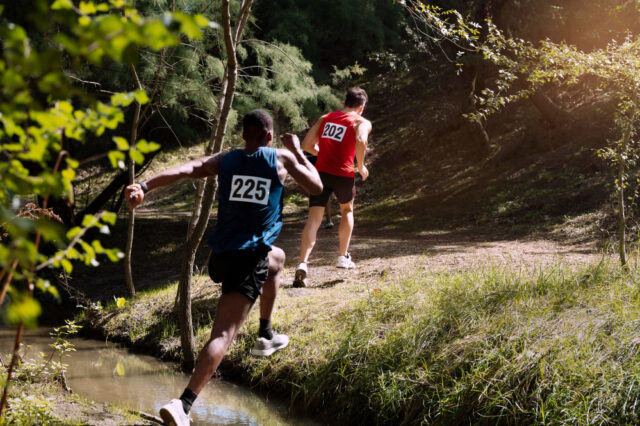
Outdoor multi-sports are redefining the boundaries of endurance and athleticism. These combine numerous activities, such as trail running, mountain biking, climbing, kayaking, or alpine skiing, into one demanding expedition that stretches across multiple terrains. From iconic global races like the Patagonian Expedition Race to personal backcountry pursuits, participants are drawn to the raw, immersive nature of these experiences.
The appeal lies in the unpredictability, the need for various skills, and the deep connection forged between athletes, nature, and the present moment. Preparing for such challenges demands more than just training, as Duke Valentour highlights—it requires a holistic approach that embraces risk, resilience, and respect for the outdoors.
Exploring the World of Multi-Sports
Multi-sport outdoor adventures combine endurance, skill, and adaptability across a range of natural landscapes. These challenges often span from snow-covered slopes to high-altitude summits, demanding physical strength and mental resilience.
Athletes might transition from alpine skiing in steep, icy terrain to trail running through dense forest or rugged scrubland. Each part of the journey presents its own conditions, requiring quick thinking and a deep connection to the natural environment. Navigation, weather shifts, and gear transitions add layers of complexity that keep competitors constantly adjusting.
Events like these are gaining attention among those looking for more than a single-discipline race. They offer a test of overall preparedness rather than mastery of just one sport. What sets them apart is the immersive nature of the experience—days spent far from civilization, where success depends as much on mental clarity as on physical prowess.
Core Disciplines and Their Unique Demands
Each sport within a multi-sport expedition brings its own rhythm and set of challenges. Alpine skiing and snowboarding demand precise control and quick decision-making as athletes navigate unpredictable snow conditions at high speed. Shifting from snow to dirt, trail running tests one’s ability to maintain endurance over long distances while adjusting to uneven terrain and fluctuating elevation.
Climbing—whether rock or ice—requires total concentration, physical strength, and a calm mind. It’s a discipline where success often hinges on subtle movements and trust in your gear. Mountain biking adds another layer, pushing athletes to handle technical descents, tight switchbacks, and rapid elevation changes. Riders must also manage fatigue while maintaining balance and control on shifting surfaces.
Training the Body and Mind for the Journey
Preparation goes far beyond a single training plan. Athletes must strengthen muscles used across multiple domains while maintaining the flexibility to adapt in real time. A runner’s lung capacity might not help much if their legs aren’t conditioned for steep climbs or long descents on a bike. Functional strength and muscular endurance are key, especially when carrying gear over extended distances.
Mental preparation is just as important. Weather shifts, gear malfunctions, and unexpected fatigue can quickly unravel a plan. Learning to stay present, recalibrate, and push forward becomes as essential as any physical skill. Selecting versatile gear, like moisture-wicking layers or hydration packs that work across sports, can reduce friction during transitions and improve overall efficiency.
Iconic Routes and Events
Some of the most respected events take place in unforgiving regions where nature dictates the pace. The Patagonian Expedition Race, held deep in the southern reaches of Chile, sends teams across vast tracts of untouched wilderness. Participants face everything from glacial rivers to tangled forests, relying on navigation skills and teamwork to make progress. The remoteness adds an extra edge—rescue or support is not easily accessible, making self-reliance critical.
In contrast, New Zealand’s Coast to Coast compresses a similar level of intensity into a single continuous push from one side of the country to the other. Athletes run across mountain passes, kayak down braided rivers, and cycle through sweeping valleys, all while managing changing weather and terrain.
What Draws People to These Challenges
Many are drawn to multi-sports by a desire to reconnect with something raw and real. When digital distractions fall away and only the trail ahead matters, a deeper sense of presence takes over. The challenge is not just external but internal—pushing limits, discovering hidden strengths, and embracing discomfort as part of growth.
There’s also something powerful about moving through such varied environments under your own power. The variety keeps the trip dynamic and unpredictable, making every step, paddle stroke, or pedal turn feel earned. It becomes more than exercise—it becomes an expression of freedom and perseverance.
Disclaimer
The information contained in South Florida Reporter is for general information purposes only.
The South Florida Reporter assumes no responsibility for errors or omissions in the contents of the Service.
In no event shall the South Florida Reporter be liable for any special, direct, indirect, consequential, or incidental damages or any damages whatsoever, whether in an action of contract, negligence or other tort, arising out of or in connection with the use of the Service or the contents of the Service. The Company reserves the right to make additions, deletions, or modifications to the contents of the Service at any time without prior notice.
The Company does not warrant that the Service is free of viruses or other harmful components












